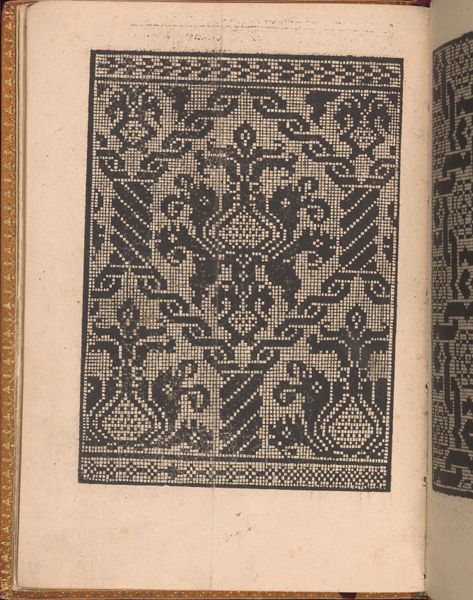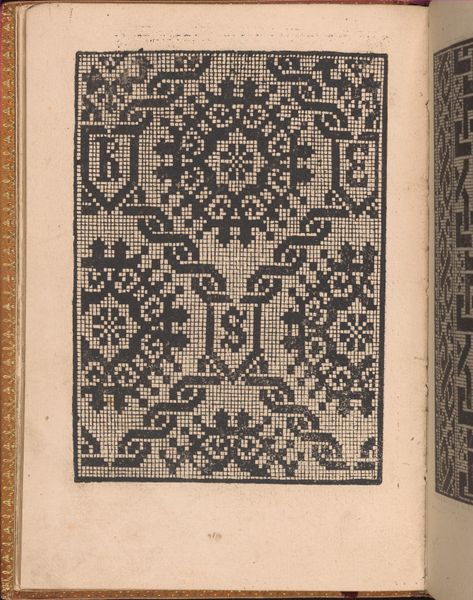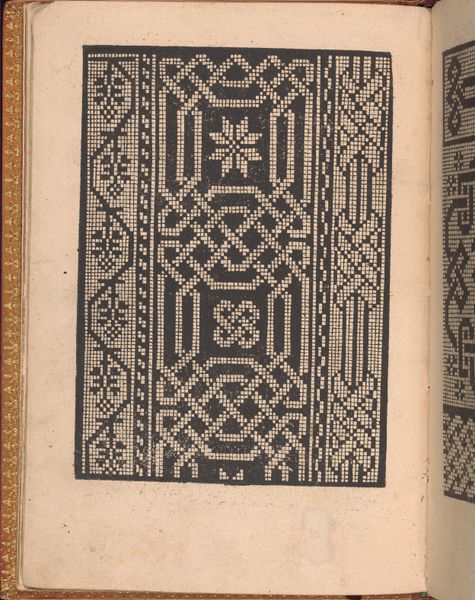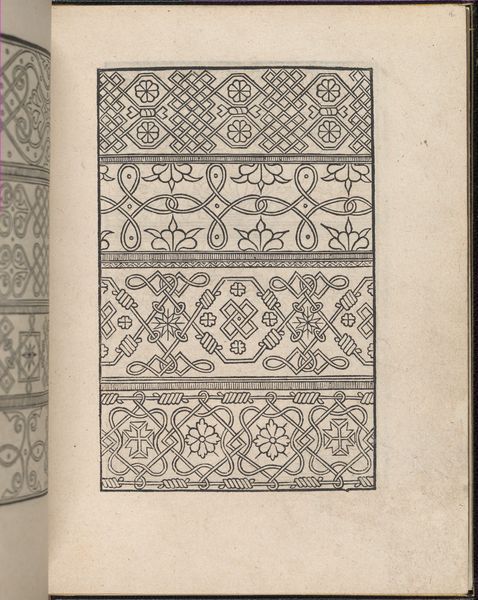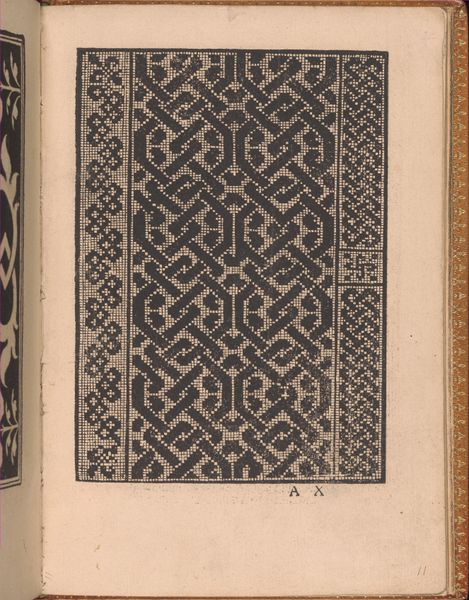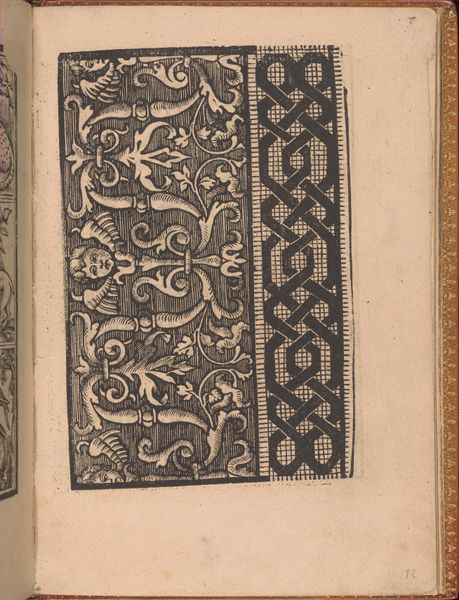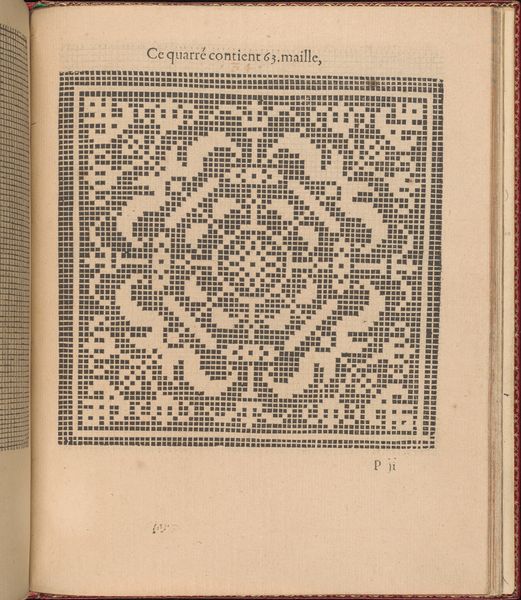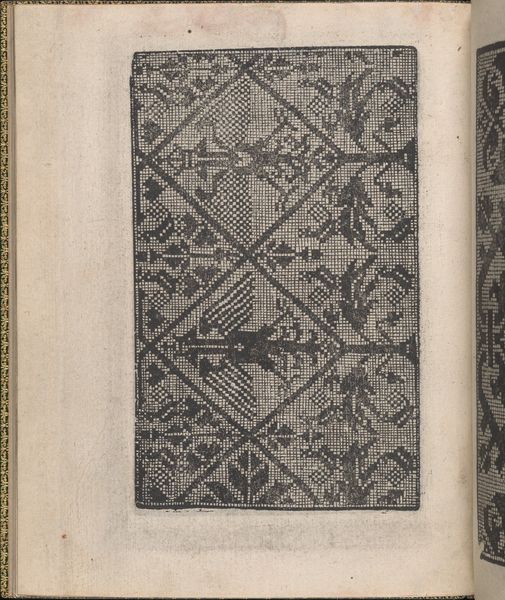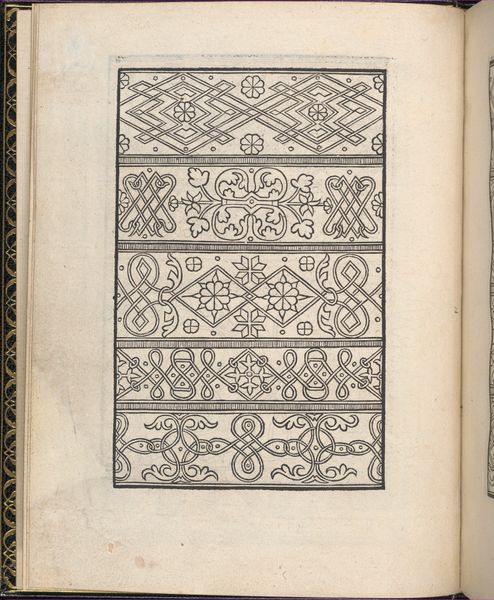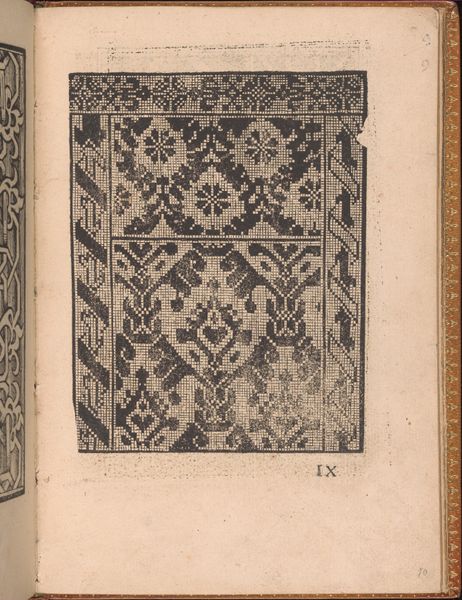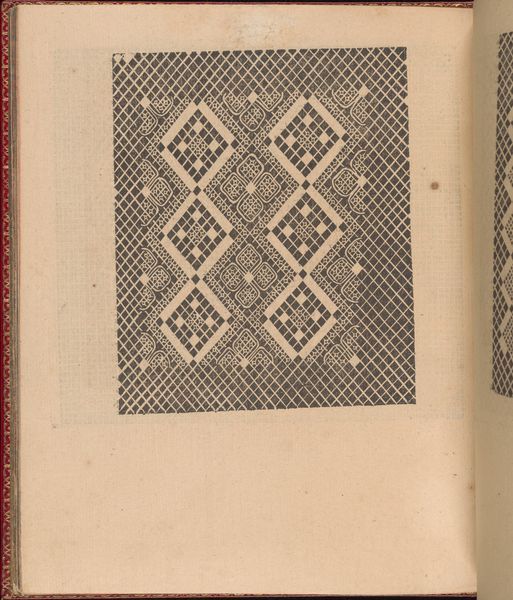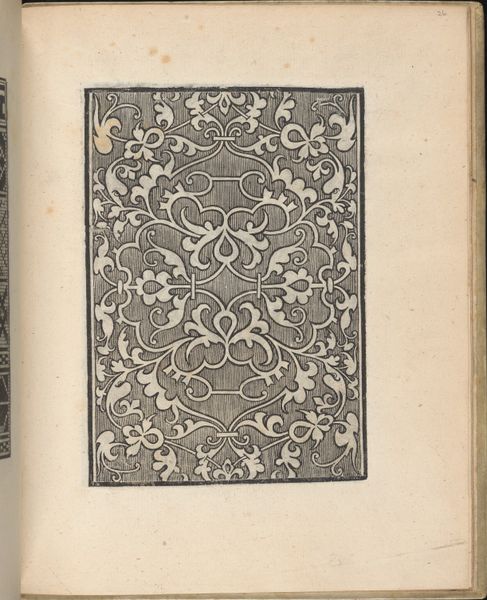
drawing, print, woodcut
#
drawing
# print
#
book
#
11_renaissance
#
geometric
#
woodcut
#
calligraphy
Dimensions: Overall: 7 7/8 x 5 1/2 in. (20 x 14 cm)
Copyright: Public Domain
Curator: Here we have a page from Nicolò Zoppino’s “Convivio delle Belle Donne,” printed in 1532. This example is a woodcut. Editor: Immediately, the contrast of black against the page strikes me. There's a certain rigidity to the overall composition, a stillness. The detail of the cross-stitch effect feels both intricate and disciplined. Curator: Yes, the artist demonstrates a remarkable sensitivity to the distribution of value. Observe how the interplay between the positive and negative space creates a dynamic tension within the otherwise geometric design. This elevates it beyond mere pattern. Editor: Absolutely, that distribution pulls me into contemplating this piece as something larger than a printed image in a book. I see echoes of needlework designs, perhaps hinting at the roles and creative outlets available to women of the Renaissance, while also conjuring associations of domestic artistry and the transmission of knowledge through generations. Curator: A sharp reading. We must consider the structure carefully. The grid imposes a rational framework, yet it serves to liberate these vegetal and vaguely anthropomorphic forms within, doesn’t it? Editor: The geometric grid acts like a sieve. These repeating motifs evoke fertility and continuity, a cycle presented with elegance. However, there is also a restricted, ornamental quality to the plants and figures that evokes a sense of confinement. It might represent social expectations? Curator: Such an interpretation does fit our expectations, however there's more to discover beyond surface impressions. The way the ink sits on the page, its slightly worn texture; the quality and intention. These qualities add more meaning when we consider this beautiful little page within the history of book-making. Editor: Precisely. The tactile nature of the woodcut gives the design a certain weight. In turn, it imbues even the purely decorative elements with symbolic heft. What a fascinating and useful book it must have been! Curator: Indeed. Zoppino's work serves as a testament to the power of art to reflect and shape the world around it. It provokes further study and consideration from all points of view. Editor: Yes. Through these symbols, shapes, and marks, "Convivio delle Belle Donne" grants us a rare glimpse into both a craft and an entire world of values that might otherwise stay unseen.
Comments
No comments
Be the first to comment and join the conversation on the ultimate creative platform.
